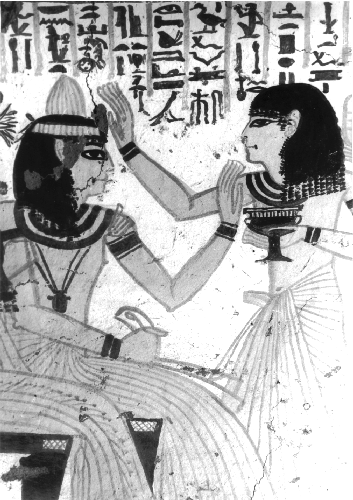
Painted scene in the tomb of Nebenmaet (TT 219), on the west bank of the Nile opposite Luxor. S. Schott photo. 8995. Copyright Griffith Institute, Ashmolean Museum, Oxford.
In Egyptian paintings or reliefs (wall carvings), the head of a person was always shown in profile (there are very few exceptions to this rule) and only one eye was actually represented. The eye was, however, shown as if seen from the front. The reason for this was that the Egyptians represented human figures as composite pictures, with different parts of the body shown in their most characteristic and most easily recognizable views: the head in profile, the eye in front view, the shoulders in front view, the arms and hands in profile, the stomach in three-quarter view, the legs again in profile. Some modern artists, for example Picasso, used a similar method. But it would have been impossible to see all of these parts in this way at the same time.

Painted scene in the tomb of Nebenmaet (TT 219), on the
west bank of the Nile opposite Luxor. S. Schott photo. 8995.
Copyright Griffith Institute, Ashmolean Museum, Oxford.
(September 20, 1996)
(JM)